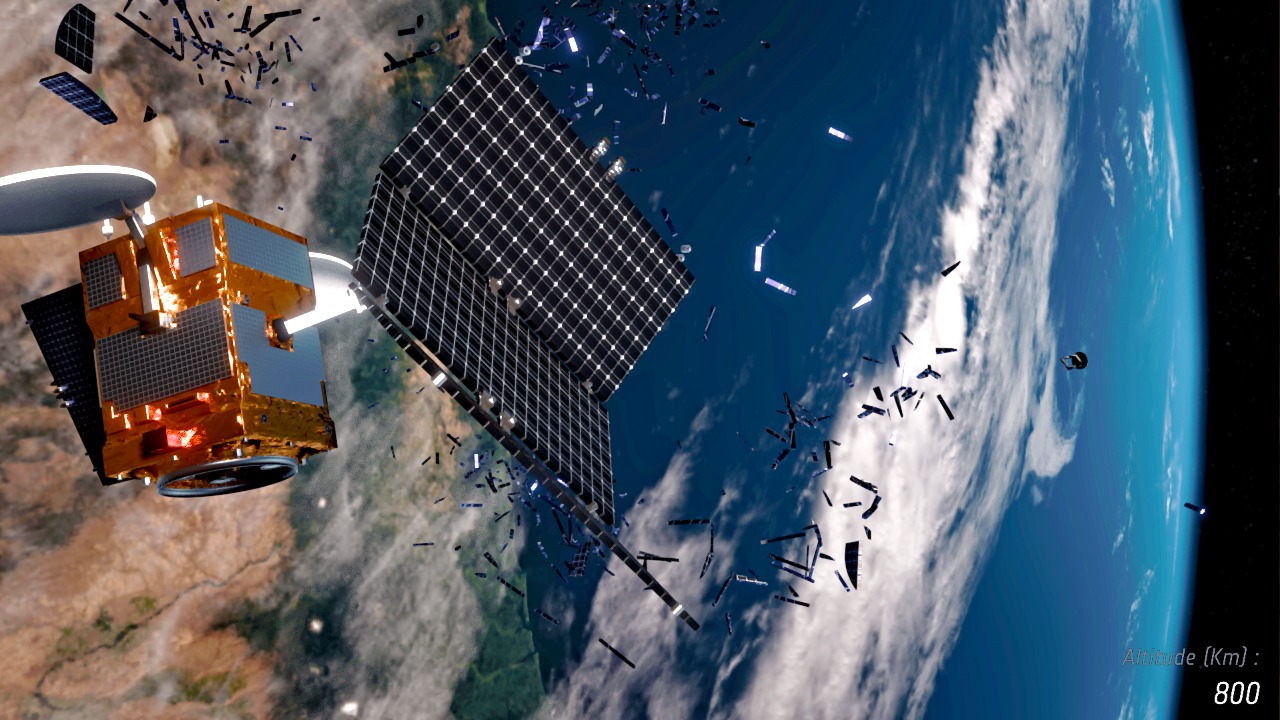
As of October 20, 2025, scientists are sounding the alarm about the increasing congestion in Earth’s orbit, warning that space is becoming too crowded to manage safely. With thousands of satellites and debris objects orbiting the planet, the U.S. Space Force (USSF) is turning to artificial intelligence to track and mitigate risks in this expanding domain. This need was underscored on December 6, 2024, as tensions rise among global powers over crowded skies. A new detector was tested on August 28, 2025, to help spacecraft evade orbital debris, while scientists caution that President Trump’s NASA budget could allow China to gain a solar system exploration advantage, as noted on July 8, 2025.
The Escalating Threat of Orbital Crowding
Scientists have issued a stark warning that space is becoming too crowded to manage safely, with projections indicating that the number of satellite launches will continue to rise, exacerbating the issue. The proliferation of orbital debris is a primary danger, with over 36,000 tracked objects currently posing collision risks to active spacecraft. This unmanaged growth in low-Earth orbit could lead to cascading collisions, known as the Kessler syndrome, which would amplify long-term hazards and potentially render certain orbits unusable.
The implications of such crowding are significant, not only for the safety of current space missions but also for future exploration and commercial activities. As more countries and companies launch satellites, the risk of collisions increases, potentially leading to a chain reaction of debris creation. This scenario underscores the urgent need for effective space traffic management strategies to prevent catastrophic incidents that could have far-reaching consequences for global communications and navigation systems.
Technological Innovations for Space Traffic Management
In response to the growing challenges of space congestion, the USSF is pushing for the development of AI tools to enhance space domain awareness. These tools are essential to keep pace with the intensifying space activities and to manage the increasing number of objects in orbit. By integrating AI with existing tracking systems, the USSF aims to predict and prevent incidents in increasingly busy orbits, thereby safeguarding both military and commercial interests.
One of the technological innovations being tested is a new detector designed to help spacecraft evade orbital debris. This device provides real-time alerts to avoid collisions, offering a critical layer of protection for satellites and other space assets. By enhancing the ability to track and respond to potential threats, these tools represent a significant advancement in space traffic management, helping to ensure the safety and sustainability of space operations.
Geopolitical Clashes Over Contested Skies
The crowded skies above Earth are not only a technical challenge but also a geopolitical one. Scientists warn that global powers are clashing over access and control of orbital slots, complicating efforts to mitigate debris and foster international cooperation. Rivalries, particularly between the U.S. and China, are intensifying, making it difficult to establish effective protocols for managing shared space resources.
As military and commercial interests in space grow, there are increasing calls for new treaties or protocols to manage these contested skies. The stakes are high, as the ability to control and utilize space effectively could confer significant strategic advantages. Without international cooperation and clear guidelines, the risk of conflict and mismanagement in space remains a pressing concern.
Budgetary Risks to U.S. Space Leadership
Amid these challenges, scientists express concerns that President Trump’s NASA budget could jeopardize key science missions, potentially ceding solar system exploration advantages to China. Budget cuts might delay crucial debris-tracking initiatives and hinder international partnerships, undermining the U.S.’s ability to lead in space exploration and technology development.
The potential impacts on NASA’s programs are significant, with specific missions at risk of being delayed or canceled. This could have broader implications for U.S. competitiveness in space, as sustained funding is essential to address the crowding challenges and maintain leadership in this critical domain. As the space race heats up, ensuring adequate resources and strategic planning will be vital to securing the U.S.’s position in the global space community.
In conclusion, the warnings from scientists about the escalating congestion in Earth’s orbit highlight the urgent need for coordinated efforts to manage space traffic and mitigate risks. Technological innovations, international cooperation, and strategic investments are crucial to ensuring the safety and sustainability of space operations in the face of growing challenges and geopolitical tensions.